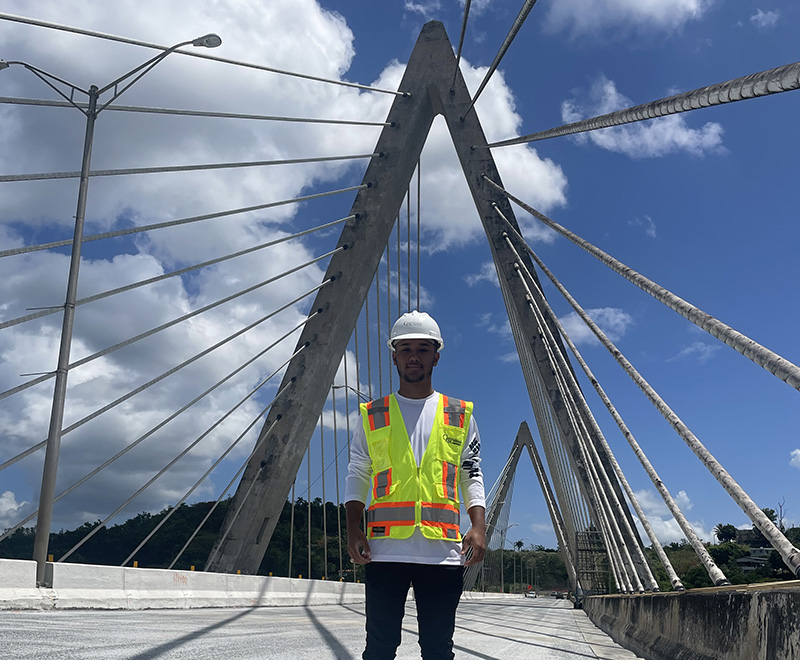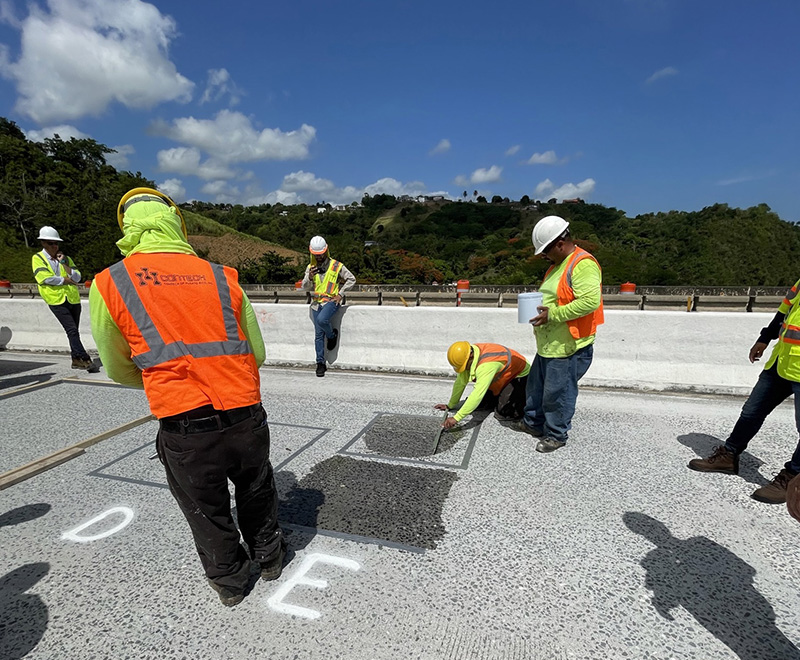
The Jesús Izcoa Moure Bridge in Puerto Rico perfectly shows how looks can be deceiving. While it may appear free of noticeable damage when driven over, standing on the bridge reveals that it moves more than expected. This is due to its design as a cable-stayed bridge, where cables play a crucial role in balancing tensions and compressions while distributing weight to the piers and beams. However, the bridge has some cracks in its structure and moves slightly more than it should.
Rest assured, the bridge isn’t on the verge of collapse, but it is structurally deficient. This term is used by engineers to describe structures that aren’t in the best shape but still safe to use. And it’s more common than you think. In fact, more than a third of bridges in the United States are structurally deficient as of 2022. However, recent investments in construction aim to tackle the problem of aging infrastructure throughout the country.
Assisting in efforts to improve infrastructure, civil engineering student Alex Torres is currently spending the summer in his home country Puerto Rico gaining structural engineering experience. With the Carrasquillo Engineering Service Group, they’re on a mission to repair the Jesús Izcoa Moure Bridge and other structures in Puerto Rico to ensure their safety.
Wearing a helmet, vest, and steel-toe boots, Torres and the service group inspect cracks underneath the bridge, focusing on the beams, which act as the bridge’s support. Using scaffolding to get a better view and make their way around the structure, they also close lanes to restrict the flow of traffic as they scrape and refill areas of the bridge. This is all to balance tension and distribute weight to prevent the bridge from accumulating more pressure and collapsing.
“The bridge is divided into 6 spans and each span is subdivided into 4 squares. The spaces that need to be scrapped or refilled along the bridge are being identified,” Torres explained. “The purpose is that the bridge ends up as leveled as possible and with the most reasonable slope.”

Torres uses a device called Ground Penetrating Radar to avoid damaging crucial structural areas of the bridge. This device sends frequencies to the ground that bounce back when they detect iron rods in the concrete that support the bridge. The frequency data is then passed to a computer, which analyzes wavelengths and shows the highest points. This process determines the depth of any cables, wire tubes, or important structures beneath the concrete, and with this information, Torres can determine the amount of scraping required for the bridge repair that won’t cause damage to crucial areas.
“The highest point in the wavelengths determines how close under the surface the rod is. Therefore, with this you can calculate the maximum clear cover which tells you how deep you can scrape without touching the rods” Torres said.
Bridges aren’t the only infrastructures Torres has been inspecting. He also got the chance to collect data at a structurally deficient parking garage. Using ZipLevel, a tool that measures elevation with pressure through gravity, the multilevel garage was a great opportunity for him to see other structures in need of repair and devices civil engineers utilize in the field. Torres noticed that engineers could get creative with tools, seeing firsthand how experienced engineers would use devices for different purposes.
“I noticed how the engineers were analyzing ways to gather data in the field. When discussing how to approach certain repairs, one of them would come up with the idea to use a tool or device that no one else would’ve thought of using for that specific task. Sometimes you can adapt a device you used previously to something else and make it work perfectly for what you need.”
Despite hours spent in the tropical heat, Torres is excited to be working on location. The opportunity to collect data and gain practical experience is invaluable to him – he’d much rather do this than input information in an air-conditioned office. He also had the chance to view a construction plan for the bridge, which provided him with more exposure to the intricacies of civil engineering – an experience he would’ve never had if he weren’t on site.
“I saw a detailed plan of how the bridge was going to be built, including the materials and all the other details. It was interesting because each project has a plan like this. It’s what everyone follows when the project begins,” Torres said. “Seeing one firsthand was fascinating. When I become an engineer and start my own projects, I’ll also have to follow a plan like that. It was an amazing experience. Being able to read one so early on is a blessing.”
Torres enjoyed applying lessons learned from his Engineering and Computer Science courses, like ECS 101, to his current work. Understanding bridge tensions, compressions, and force dynamics helped him make connections between his work experience and classroom education. Additionally, his familiarity with AutoCAD, a software program used by architects and engineers to create model structures, proved useful during the bridge repair process.
When the service group isn’t collecting data or repairing damaged areas, Torres chats with the other engineers about their experiences, which provides him with an opportunity to explore different career paths within civil engineering. With the vast array of options available in this field, he’s narrowed his focus to structural and construction engineering as possible career choices after graduation.
“I think it’s good to have a sense of what you would be working on after you graduate,” Torres said. “It’s motivated me to study harder in school. I’m grateful for what I’ve learned at ECS and this experience.”
Torres also encouraged students to participate in various activities to make the most of their time at ECS. He emphasized the importance of pursuing one’s interests and being a part of the community. Not only has his experience allowed him to gain more exposure in civil engineering but it’s also allowed him to build a future for himself.
